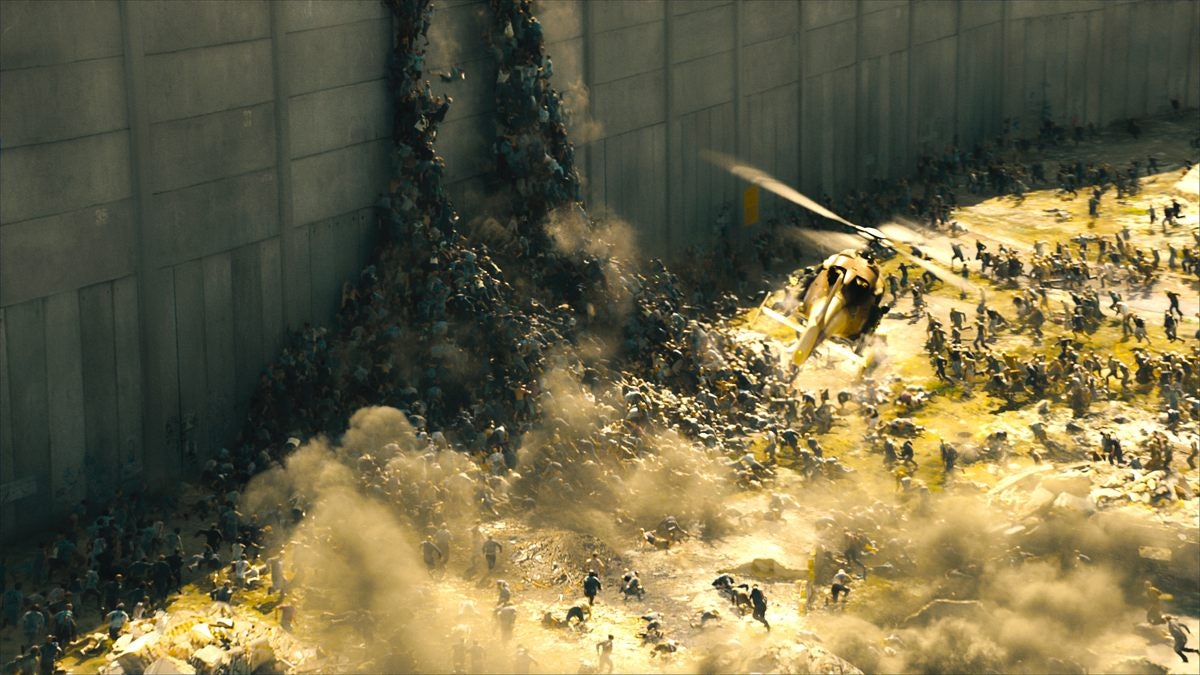
Brad Pitt deserves better than 66 percent on Rotten Tomatoes. Sure, the Oscar-winning actor wasn’t exactly taking a huge risk when he lurched into the zombie subgenre, but the end result is a captivating and unique take on the unkillable horror trope that still holds up a decade later.
With HBO’s The Last of Us set to push zombies into a bold new direction, there’s never been a better time to revisit World War Z and the rocky behind-the-scenes story that brought Max Brooks’ novel to the big screen. Here’s how Pitt and a ragtag team of filmmakers redefined the zombie genre and made an underrated thriller.
World War Z breaks from zombie tradition in a few key ways. Unlike 28 Days Later and other post-apocalypse variants, the story occurs as the end of the world is unfurling. We see the outbreak happen, and then we watch as various nations try to stave off the apocalypse. It’s also a globe-trotting adventure, with Brad Pitt standing in for a James Bond-esque figure as he circumnavigates the globe looking for a cure.
Perhaps most important, World War Z invented a new visual language for its zombies. While George Romero’s zombies shuffled and Danny Boyle’s sprinted, this movie turns the undead into a roving hivemind. The film’s most iconic visual is its mass of zombies piling onto one another like a swarm of insects to climb over walls and take down flying vehicles.
For director Marc Foster, that undead swarm represents the central message of his movie. “For me, the metaphor was more about overpopulation today and less and less resources, and this swarming of them is almost like them going after the last resources, especially when the feeding frenzy starts,” he told Collider in 2013.

At the center of World War Z stands Pitt as Gerry Lane, a retired investigator for the United Nations who’s tasked with figuring out what caused this zombie apocalypse, and how to solve it. After rescuing his family from New York, Pitt escorts a young virologist to a South Korean facility where the outbreak was first reported. But when the scientist ends up dead, it’s up to Pitt to save the world himself.
Lane is an odd character. World War Z goes out of its way to paint him as an everyman, while Brad Pitt carries himself like Tom Cruise in a Mission Impossible movie.
“He’s someone who has special skills and has been in war zones, and crisis was his background. But at the same time he’s this everyman,” Forster told USA Today.
“Gerry Lane, one of the worst names in film ever,” Pitt added. “It was appropriate. I don’t know why it’s appropriate. Gerry with a ‘G’. He’s the anti-action hero. It’s an anti-action hero name.”

World War Z ran into trouble during production, specifically with its ending. The original script called for a big bloody battle in Russia to cap things off, but when they filmed it, that ending fell flat. So Brad Pitt asked Damon Lindelof to watch the film. Lindelof then worked with his fellow Lost alum Drew Goddard to craft a new setpiece.
“[Brad Pitt] took me through how excited he was when he read the book, what was exciting for him, the geopolitical aspect of it,” Lindelof told Vanity Fair. “But when we started working on the script, a lot of that stuff had to fall away for the story to come together.”
The result is a chillier and more effective ending. After chasing the origins of this zombie outbreak across the world, Pitt arrives at a medical research facility in Wales where a group of scientists is holed up in one part of the building while zombies run rampant in another. Of course, that’s where the cure is too.
I won’t spoil World War Z’s big reveal, but suffice to say that with Lindelof and Goddard’s help, Pitt and Foster mixed zombies, action, and a geopolitical thriller to create a zombie movie that will stand the test of time, even as the genre continues to evolve.
World War Z is streaming now on Amazon Prime.







